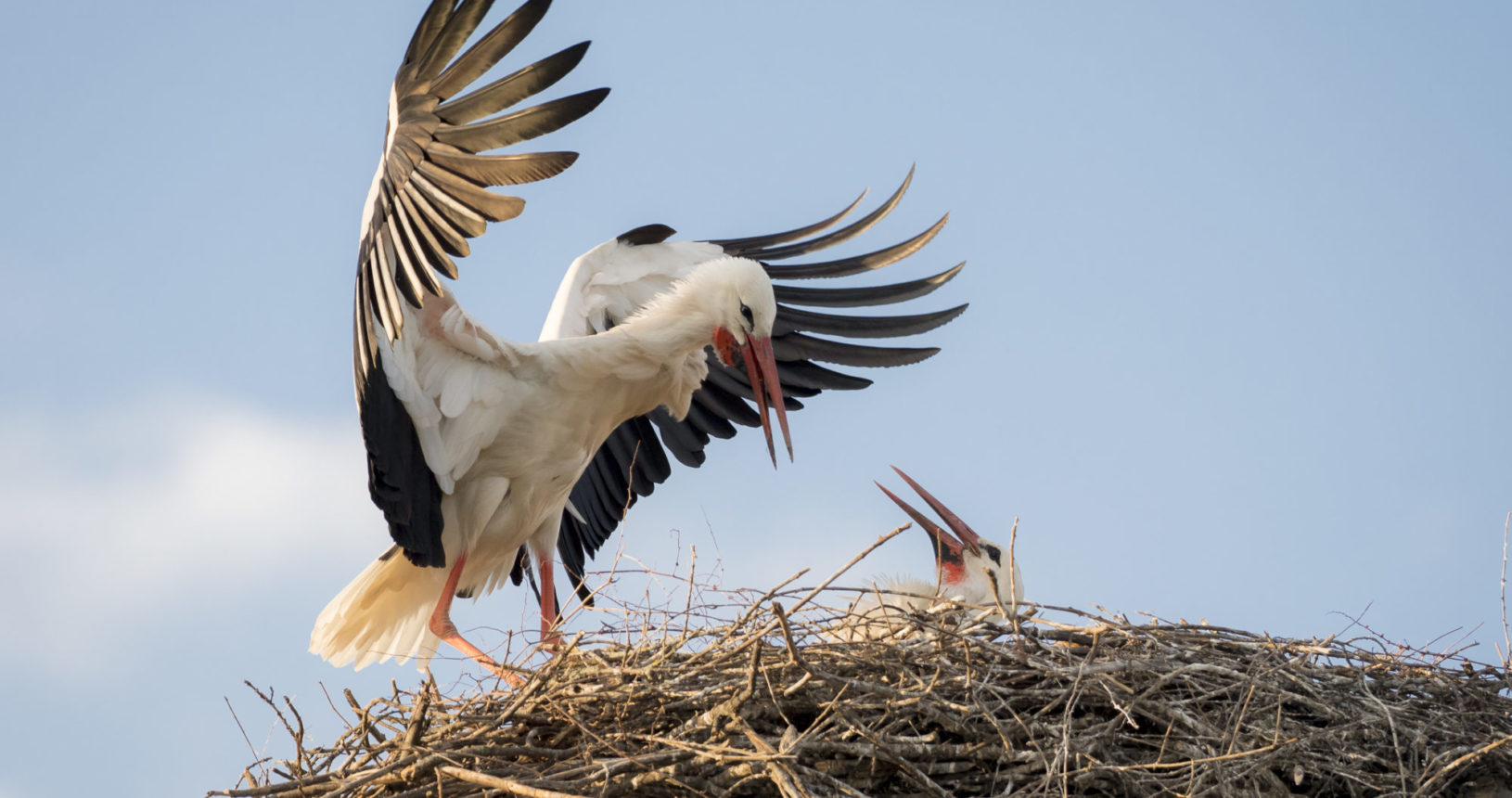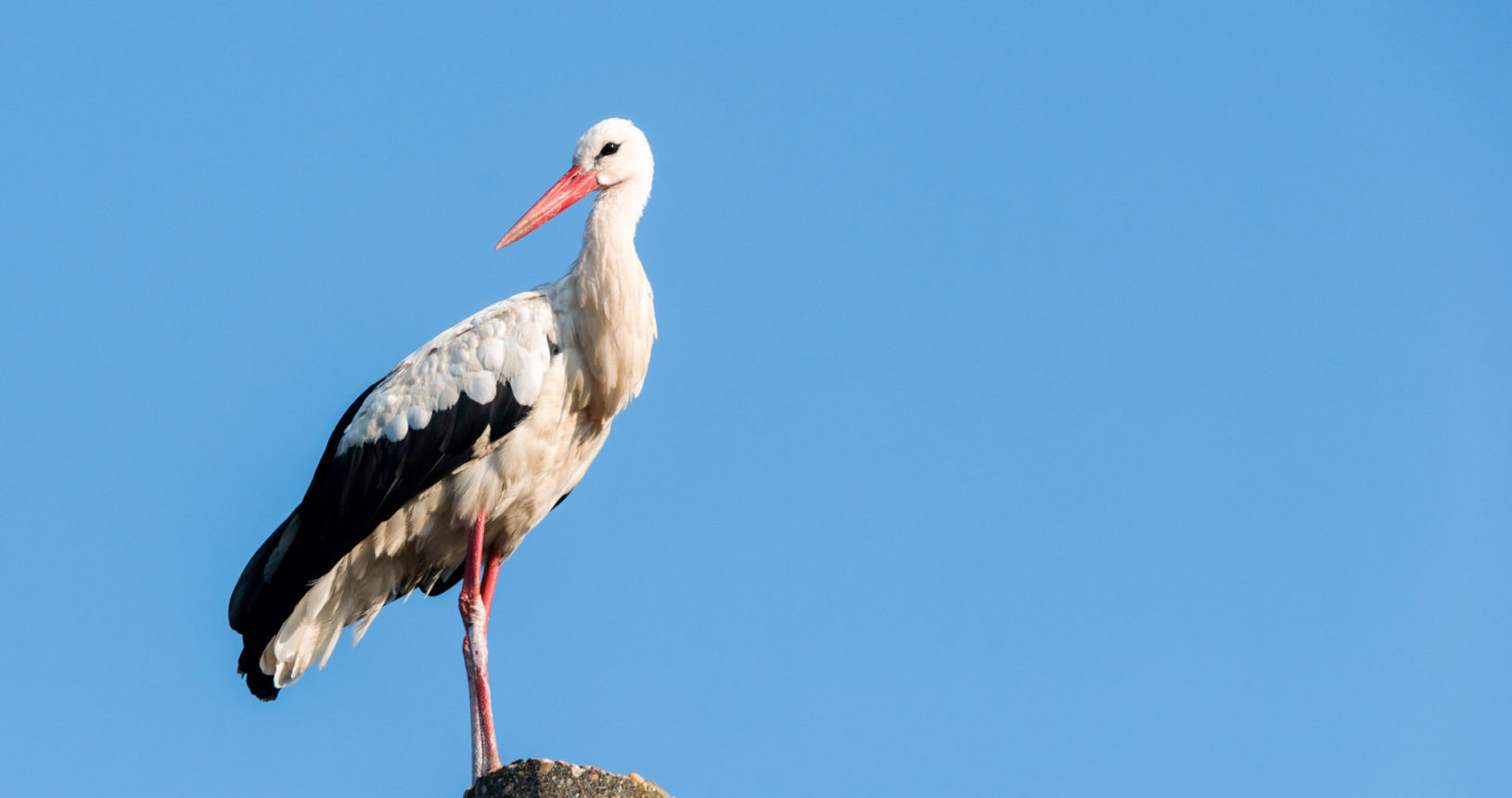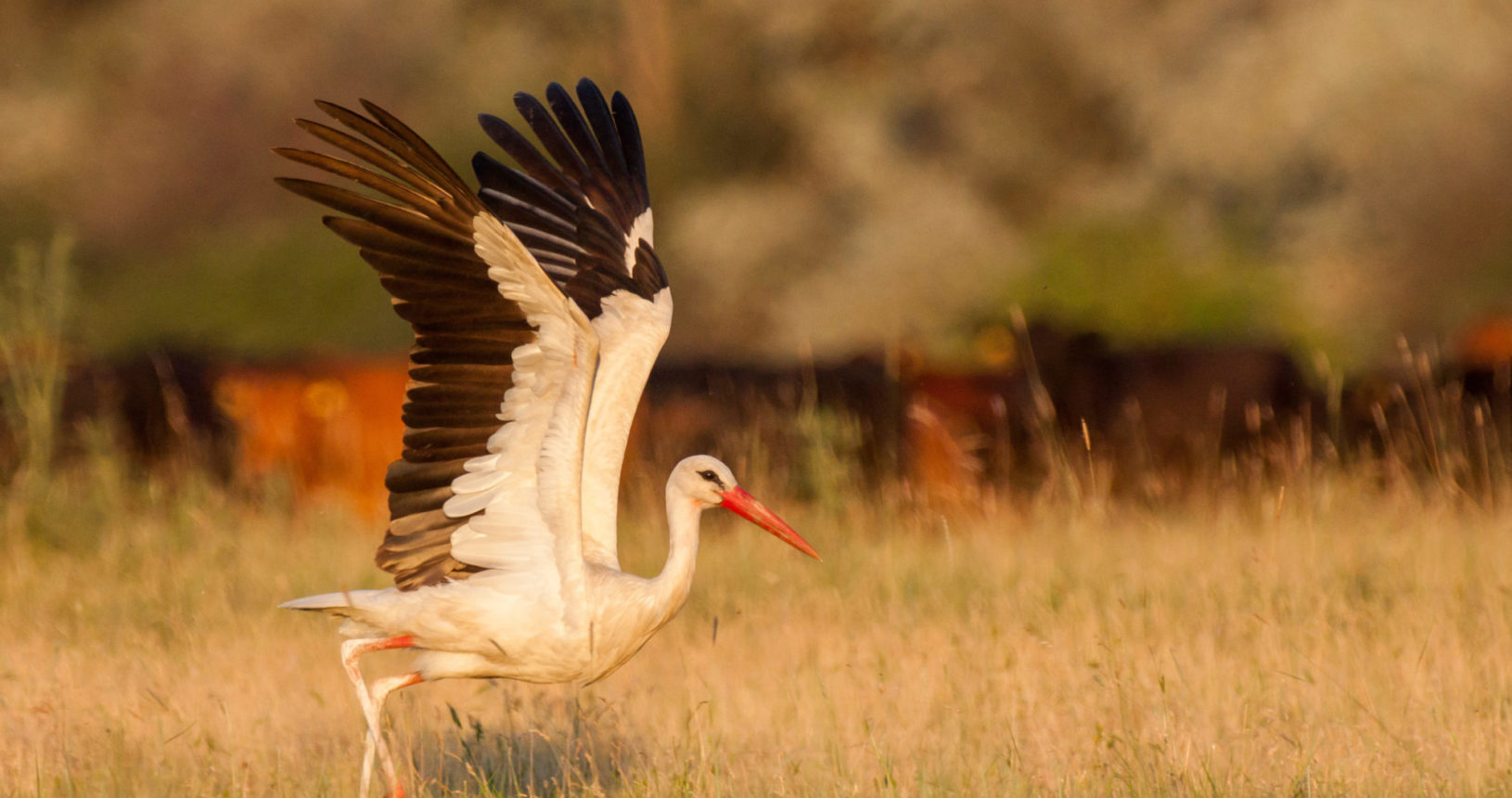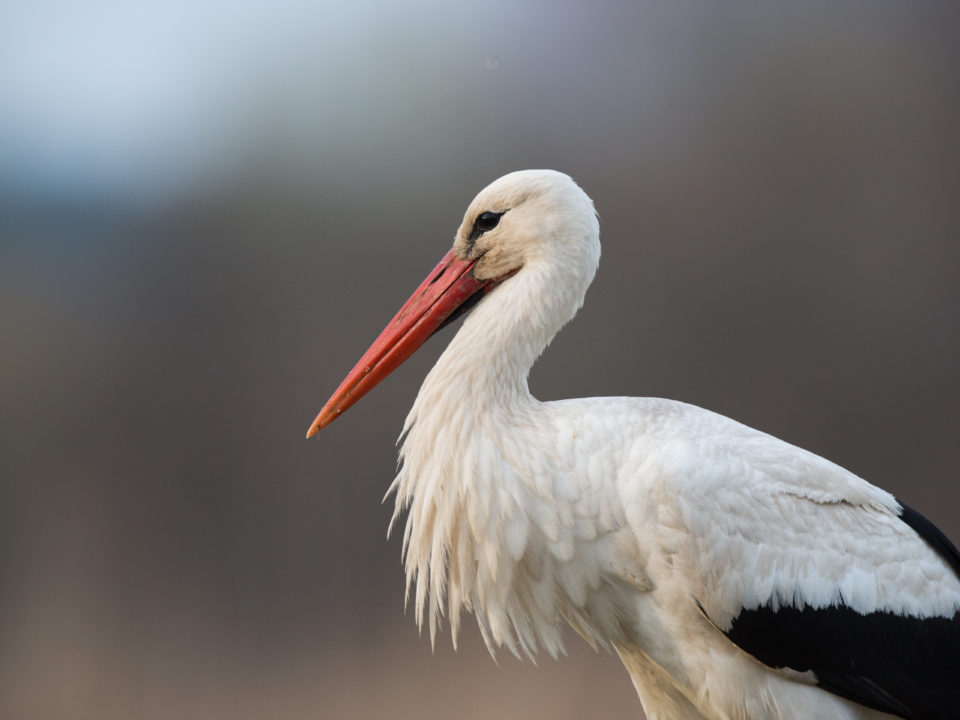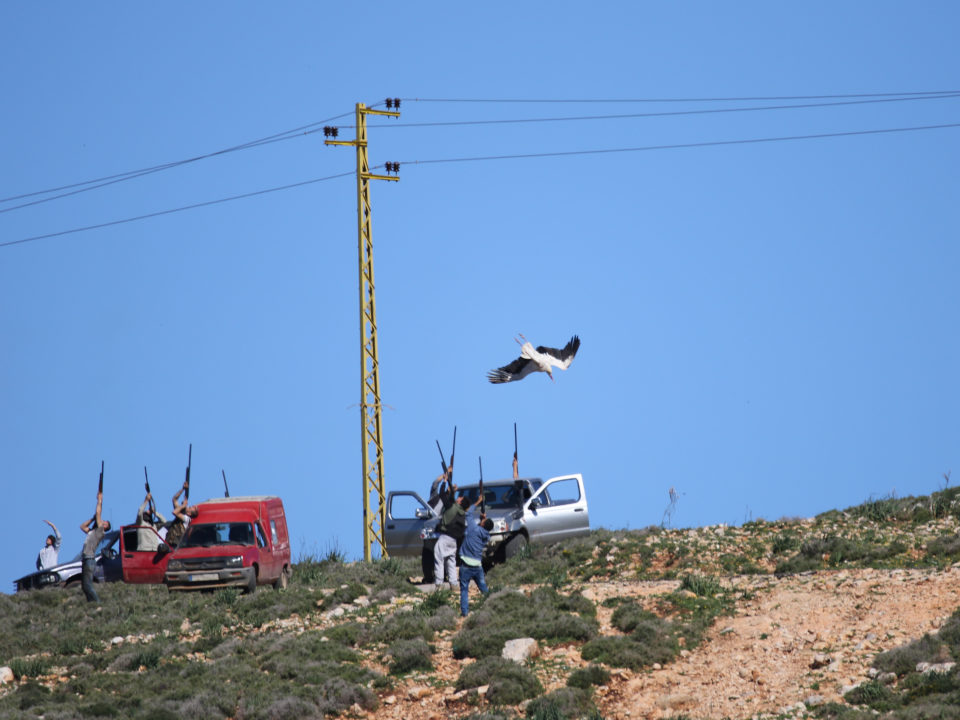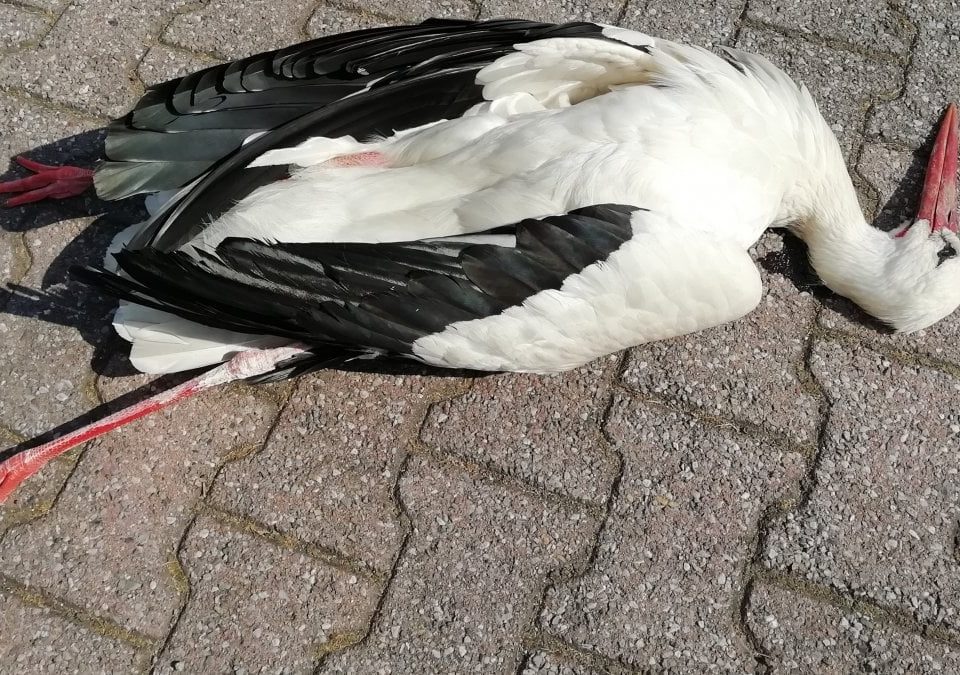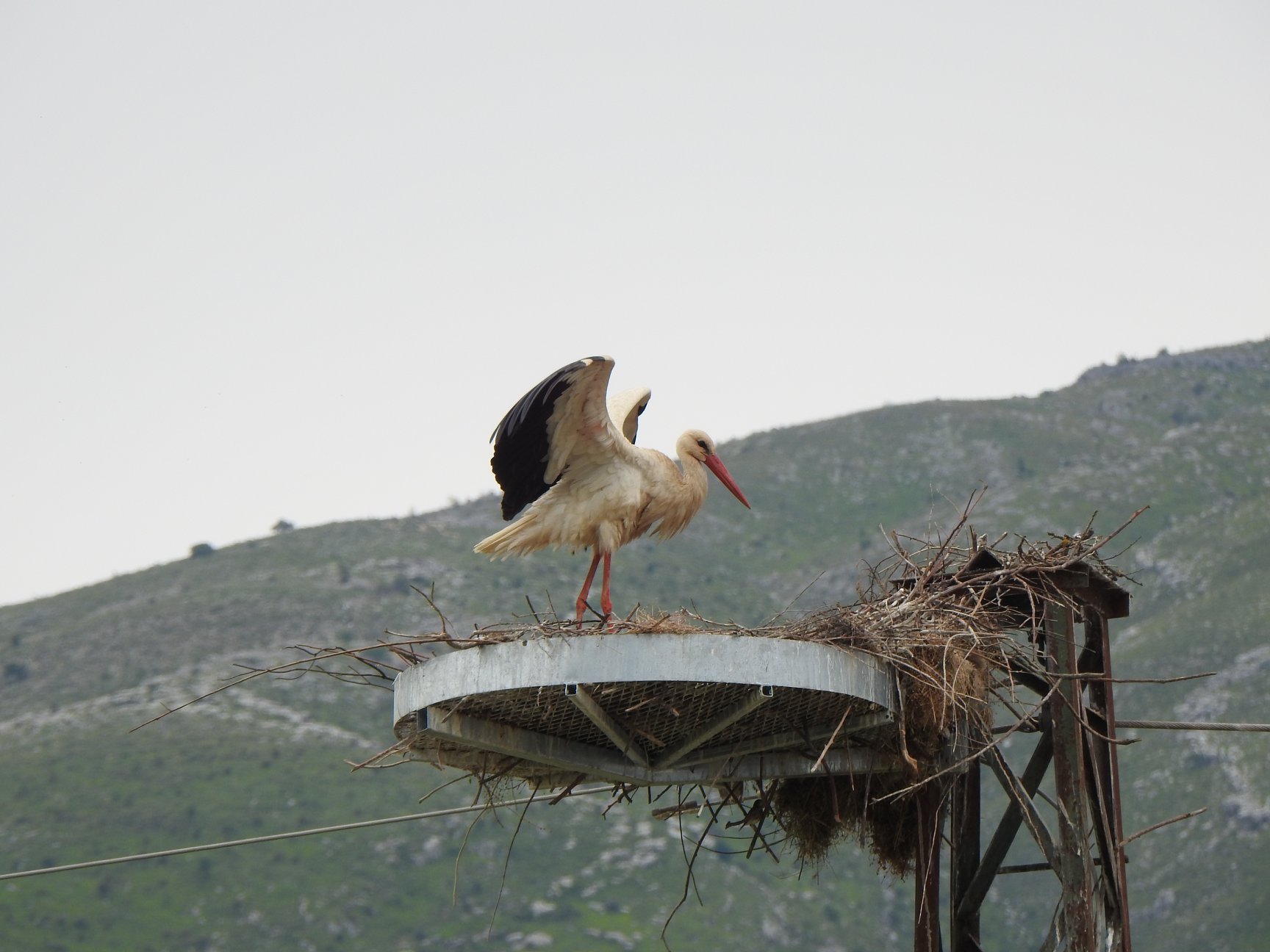White stork
Category: Waders
Wingspan: 155-165 cm
Top speed: 110 km/h
Conservation Status: Least concern
As the famous bearer of new-born babies to expecting parents, the White Stork is a widely beloved symbol of good luck.
Instantly recognisable, with its black-tipped white feathers and long red beak and legs, it is a familiar sight across Europe where it commonly lives close to humans, perched high upon trees, poles or village rooftops. After painstakingly constructing huge nests with gathered sticks, migrating pairs often return to the same nest year after year.
White storks migrate in spectacular flocks numbering thousands. With their huge wings, they soar upon rising warm air currents to altitudes of 1500 m and then simply glide over huge distances. Since these warm currents do not form over water, storks travelling between Europe and Africa avoid the Mediterranean Sea, diverting via the Bosporus in the east or the Strait of Gibraltar in the west.
Yet there are other dangers. Migrating flocks, weak and exhausted by their epic journey, are particularly vulnerable to collision with overhead powerlines and the threat of illegal shooting along their migration routes.
White Storks taking the eastern route across the African-Eurasian flyway risk a highly dangerous crossing over Lake Qaraoun – an illegal shooting blackspot in Lebanon’s Beqaa Valley. At the height of migration season, hundreds of thousands of storks soar over Lebanese skies within a few short days. Every year, many thousands make it no further.
For more information on the legislation covering this species, as well as maps and research, check out: http://datazone.birdlife.org/species/factsheet/white-stork-ciconia-ciconia
Threats
- Illegal shooting

